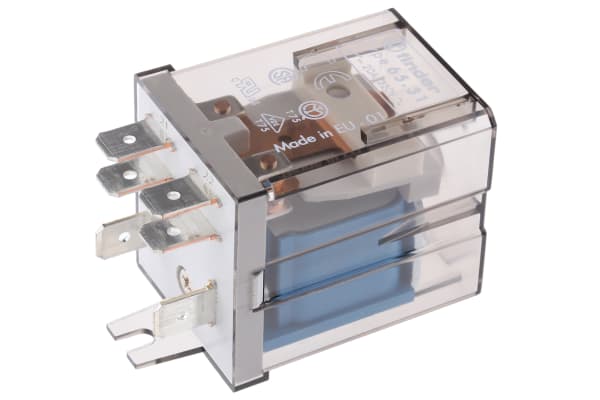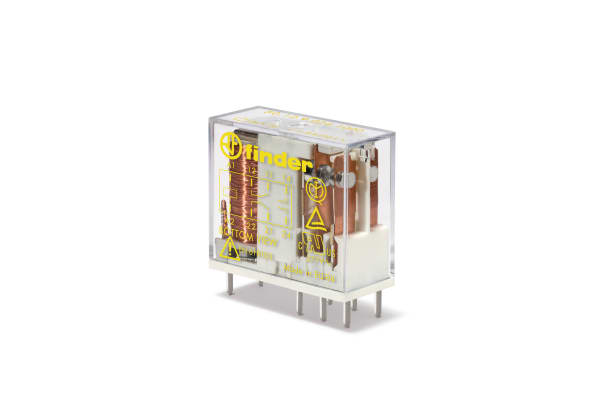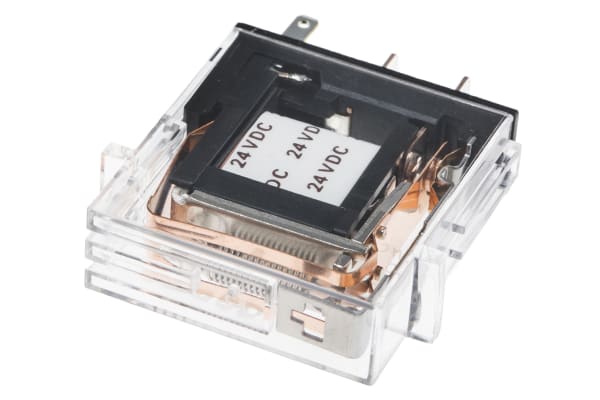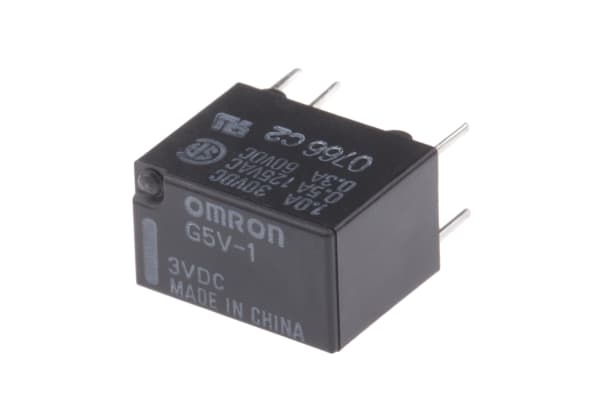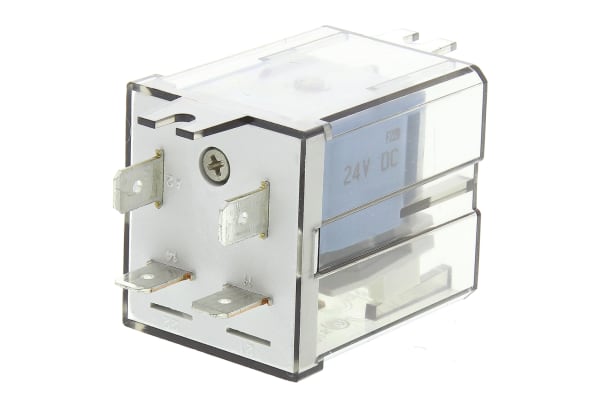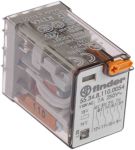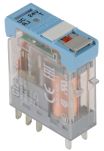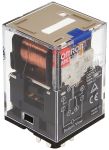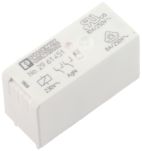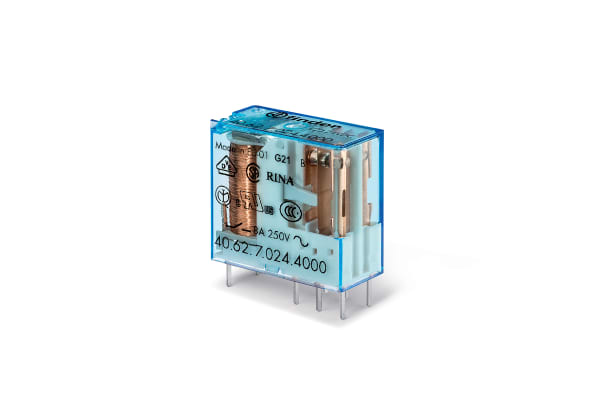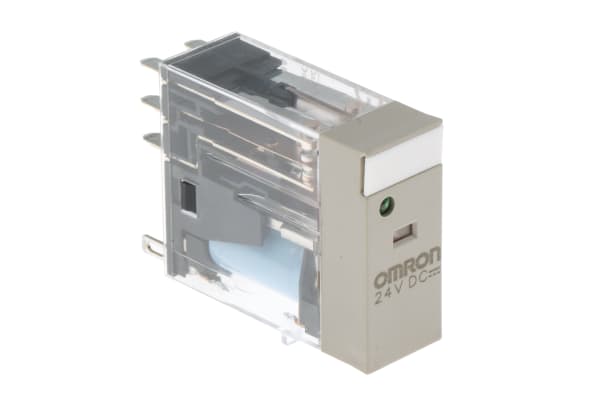Non-Latching Relays
Relays are electrical switches that are operated by electrical impulses with the primary function to open and close a circuit, they can also be referred to as industrial switches. There are 2 main types available, latching and non–latching relays.How do non-latching relays work?Non-latching relays are in a normally closed (NC) position and will stay in this state without power. When power passes through the circuit, the relay switched to a normally open (NO) position by using an internal coil to generate a magnetic force, holding this NO position. Once the current is turned off, it returns to the NC position. This makes non-latching relays well suited to push-button applications like keyboards and micro-controller input buttons.What are non-latching relays used for?Non-latching relays are highly durable and versatile components, making their performance long lasting and suitable for use in a wide range of applications, such as:Automotive enginesHousehold appliancesIndustrial machineryMedical equipmentTelecommunications equipmentWhat is the difference between latching and non-latching relays?Both types of relays in similar in design and function, however, a significant difference between them is that a latching relay will remain in the last position it when it was last powered, whereas a non-latching goes back to its normal position. This makes each more type of relay suitable for different applications. Considerations when selecting a relayWhen choosing a relay, it is important to consider a number of specifications to ensure it is fit for purpose, some factors include:Coil voltage – the required voltage to actuate the switching mechanism. If a voltage is too high this could damage the components, if it is too low then it will not actuate. Contact configuration – This is the state the contacts are in without power. For example SPST, single pole single throw.Contact material – the relay contacts are available in many materials that have certain properties. Common materials are gold, silver, tin oxide and nickel Coil power – the amount of power (watts) the coil operates at. This must match the power in the circuit for correct function. Coil resistance – the amount of resistance (ohms) in the circuit that the coil creates.
-
Omron, 110V ac Coil Non-Latching Relay SPDT, 10A Switching Current Plug In Single Pole, G2R-1-SN 110AC(S)
IDR163,838.18 -
Schneider Electric, 12V dc Coil Non-Latching Relay 4PDT, 8A Switching Current Plug In, 4 Pole, RXM4AB2JD
IDR202,752.37 -
Omron, 24V dc Coil Non-Latching Relay DPDT, 10A Switching Current Plug In, 2 Pole, MY2N 24DC(S)
IDR253,833.80 -
Finder, 24V dc Coil Non-Latching Relay SPDT, 20A Switching Current Flange Mount Single Pole, 65.31.9.024.0000
IDR273,133.56 -
Phoenix Contact, 12V dc Coil Non-Latching Relay SPDT, 6A Switching Current DIN Rail Single Pole, 2903371
IDR139,713.48 -
Finder 24V dc Safety Relay - Dual Channel With 2 Safety Contacts , 0 Auxiliary Contact
IDR250,477.32 -
Omron, 12V dc Coil Non-Latching Relay 4PDT, 5A Switching Current Plug In, 4 Pole, MY4IN 12DC(S)
IDR230,548.22 -
Omron, 24V dc Coil Non-Latching Relay SPNO, 5A Switching Current Plug In Single Pole, G7T-1112S-DC24V
IDR188,592.22 -
Omron, 3V dc Coil Non-Latching Relay SPDT, 2A Switching Current PCB Mount Single Pole, G5V-1 3DC
IDR222,157.02Pack (1 Pack of 5) -
Finder, 24V dc Coil Non-Latching Relay SPNO, 30A Switching Current Flange Mount Single Pole, 65.31.9.024.0300
IDR268,833.07 -
Finder, 110V ac Coil Non-Latching Relay 4PDT, 7A Switching Current Plug In, 4 Pole, 55.34.8.110.0054
IDR205,269.73 -
Releco, 24V ac/dc Coil Non-Latching Relay DPDT, 5A Switching Current PCB Mount, 2 Pole, C12A21BX24AD
IDR252,889.79 -
Finder, 24V dc Coil Non-Latching Relay SPST Plug In Single Pole, 62.31.9.024.4800
IDR331,452.40 -
Omron, 24V dc Coil Non-Latching Relay DPDT, 10A Switching Current Plug In, 2 Pole, MKS2PI DC24
IDR226,562.40 -
Finder, 230V ac Coil Non-Latching Relay SPDT, 16A Switching Current PCB Mount Single Pole, 40.61.8.230.0000
IDR222,576.58 -
Phoenix Contact, 230V ac Coil Non-Latching Relay DPDT, 15A Switching Current PCB Mount, 2 Pole, 2961451
IDR273,028.67 -
Omron, 24V dc Coil Non-Latching Relay 4PDT, 3A Switching Current Plug In, 4 Pole, MY4 24DC (S)
IDR245,652.38 -
Finder, 24V dc Coil Non-Latching Relay DPDT, 10A Switching Current PCB Mount, 2 Pole, 40.62.7.024.4000
IDR144,643.31 -
Finder, 24V ac Coil Non-Latching Relay 3PDT, 16A Switching Current Flange Mount, 3 Pole, 62.83.8.024.0000
IDR323,061.20 -
Schneider Electric, 48V ac Coil Non-Latching Relay DPST-C/O Plug In, 2 Pole, RXG23E7
IDR235,582.94 -
Omron, 12V dc Coil Non-Latching Relay DPDT, 10A Switching Current Plug In, 2 Pole, MKS2PI DC12
IDR190,375.35 -
Schneider Electric, 48V ac Coil Non-Latching Relay DPST-C/O Plug In, 2 Pole, RXG22E7
IDR242,610.57 -
Omron, 24V dc Coil Non-Latching Relay DPDT, 5A Switching Current Plug In, 2 Pole, G2R-2-SN 24DC(S)
IDR283,203.00 -
Finder, 24V dc Coil Non-Latching Relay DPNO, 16A Switching Current Flange Mount, 2 Pole, 62.82.9.024.0300
IDR251,840.89






